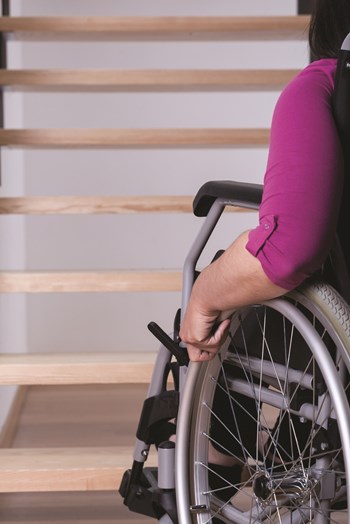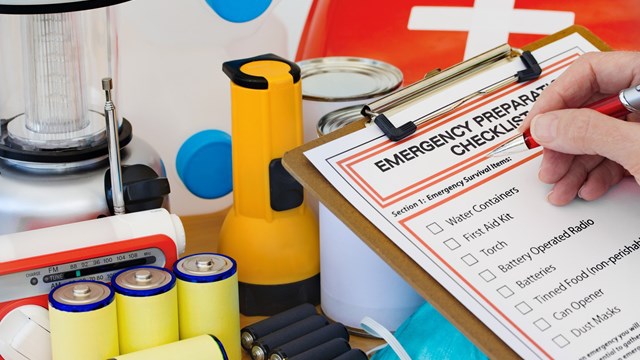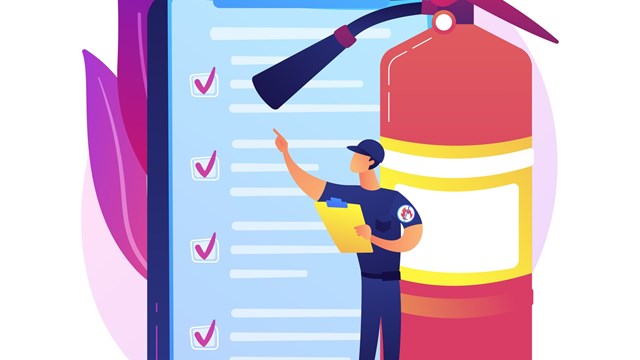
New York is home to almost 1 million people age 65 or older; approximately one in three seniors suffer some type of disability, according to the last census. In a city like New York, where anything can happen—from fire, to extreme weather, to terrorism—a disaster plan is an obvious necessity for all HOAs, condos, and multifamily dwellings. Young, able-bodied individuals generally do not focus on safety or security until an event or occasion shows a need for concern, but those living with mental or physical handicaps, or other health restrictions, need to be aware of the challenges presented by everyday living, and emergency situations. Children and teenagers, another vulnerable part of a community, often live side by side with seniors. They may also need special consideration during an emergency.
Most condominiums, multifamily buildings, and planned communities have policies and procedures in place for emergency evacuations and alerts, but a proactive plan to insure everyone’s safety and security before disaster strikes isn’t static. Annual reviews, updates, and revisions will be required to keep everyone safe, healthy and out of harm’s way. Boards, property managers and the residents themselves all have a role to play in making sure everyone is taken care of in the event of an emergency situation.
Everyone Plays a Part
The Red Cross, in their seminal pamphlet on Disaster Preparedness for People with Disabilities, states that, “It is important for everyone to be prepared to meet his or her basic needs by storing food and water for a minimum of three days or more,” and go on to say for those with disabilities, “You should also be ready to meet your specific disability related needs by storing sufficient oxygen, medications, battery power, etc., for at least seven days after a disaster.”
That advice, on having an adequate supply of medications and such, should not only be heeded by the disabled but also by the elderly as many are on some form of medication—be it for something major or minor, it’s better to be prepared.
“A month or two ago there was a concern for a hurricane to hit New York City,” says Cynthia Graffeo, the director of client relations at New York City-based Argo Management. “So in terms of planning for things of that nature we look for one: to make sure the building envelope is as tight as possible. So if there are items on roofs, balconies or terraces we would look to have them secured or removed so they don’t fly off and hurt someone. We also send out letters to residents. We remind them to have extra flashlights and batteries on hand, as well as drinking water and a reminder that if they take medication they should get their prescriptions filled.”
In terms of emergency planning, the Red Cross also recommends creating a supply kit containing food, water, medication, electronic devices and anything else you might need to survive for a few days. They also suggest creating two kits, one for your home and the other for your car. They note that the kits do not need to be made all at once and that you can gather the provisions as you would normally come across them in your daily life, like getting the food and water for your kits when grocery shopping or medications when you see your doctor.
Karen Berard-Reed, senior project manager at the National Fire Protection Association (NFPA) in Quincy, Massachusetts, notes that in addition to having a go bag ready that people need to make sure they are aware of how their disabilities might affect their ability to get away in the event of an evacuation due to fire, or something else, and have a plan in place. Whether it’s not being able to hear a fire alarm because of deafness, people in that situation can get a shaker to go under their pillow that will shake them away in the event the alarm goes off, or being in a wheelchair and needing to hole up and wait for rescue, knowing how a person’s specific situation affects them can help make sure that everyone stays safe.
“The building staff will know the residents very well since they would see them every day and know what their needs and concerns are. So it’s important to sit down with the building superintendent and other staff and generate a list [of people that would require extra help should something happen],” says Graffeo.
The Red Cross also suggests that you keep an emergency contact list and a medical list together. For the contact list they suggest listing someone who lives at least 100 miles away, so that they will be outside the disaster zone and easier to reach, while as far as the medical list goes they say that you should list: the medications you are taking and their dosages, the reasons you are taking said medication, and contact information for the doctor who prescribed the medication. This would allow first responders and aid workers to better meet your needs. If you have a hard time communicating keeping a series of note cards with important information on them in your disaster kit may be helpful.
Families with small children will also want to have a supply of diapers, formula, and personal health and comfort items in their emergency supplies.
Animals, be them pets or service animals, should also be taken into account. The Red Cross suggests having a supply of food and whatever medication they may need and note that in the event of a disaster, service animals may be unable to help as they may be too shaken up or frightened.
It should be recognized that a severe storm may knock out power and water, but not require an evacuation.
“It’s especially important to understand how a power outage would impact your building since you could educate your residents about registering with Con Ed or National Grid and to get on their life sustaining equipment checklist. So if there is an outage in your area they are familiar with the prioritization and needs of the people in your building,” says Ira Tannenbaum, assistant commissioner for public/private initiatives for the New York City Office of Emergency Management (OEM).
While some may choose to leave until creature comforts can be restored, those who choose to remain will need adequate supplies of canned foods, water, and batteries. When a mandatory evacuation is called for, “hunkering down” at home is not an option.
Formulating a Disaster Plan
“The first thing we always recommend is understanding the hazards you face. That’s the first step to any plan, no matter what you’re writing it for. If you’re a building that’s near the water then you need to factor in inundation and storm surge. If you’re a building that’s someplace that relies on overhead power systems, like Staten Island or other places, then loss of power is a primary concern,” says Tannenbaum.
Tannenbaum continues, “You should take a step back and think ‘What if this happened to me?’ We really want to encourage people to think about that, not to scare them but to make sure they’re prepared. We want people to take that information and say ‘How would I handle it?’ if say the power went out in your building.”
After you understand what could possibly happen comes the planning stage, where you take all those horrible things you hope never happen and create plans just in case they do.
“It’s absolutely critical to have an emergency plan. You don’t know when you’re going to have an emergency, so when one occurs there’s no time to plan there’s only time to implement something—whatever your plan may be. You have no time to be starting from scratch when an emergency occurs, so you need to plan in advance. What we need to do is make sure our staff and management personnel know what their responsibilities are and know what to do,” says Dan Wurtzel, president of FirstService Residential, a management firm in New York City.
The planning stage is also the time to identify residents who might need extra help, like the elderly, the disabled and small children. “Between the managing agent and the superintendent they will put together a list and besides putting together a list of the elderly and those that require assistance they will get the emergency contact information for family members so they can be contacted if something happens,” says Wurtzel.
Putting together such a list isn’t always easy. Residents often might not want to give you the information you need, even if it’s to help them. So while you could ask residents to fill out questionnaires when they sign the final pieces of paperwork before moving in, that won’t necessarily get you the information you need.
“The building staff will know the residents very well since they would see them every day and know what their needs and concerns are. So it’s important to sit down with the building superintendent and other staff and generate a list [of people that would require extra help should something happen],” says Graffeo.
Part of the issue could be expectation of privacy. Even after it’s complied, such a list shouldn’t be kept out in the open where anyone can get at it. Graffeo says, “We keep the list to a need to know or confidential basis to protect the privacy of the residents. That said the building staff and property manager will usually have the list. It won’t just be kept out on the concierge desk, but if something happens we’ll be sure to work with the building staff to make sure everyone is taken care of by having them check in on the residents.”
The point of such a list would be to help direct first responders, so that those who need help or are unable to escape given an emergency are taken care of.
“We encourage building management to understand the needs and maybe have the right resources in place to support them, but to also be able to guide and direct first responders. To say, ‘We’ve got residents on the third floor who have special needs,’ for example,” says Tannenbaum.
“One of the key components in handling emergencies is communications with the residents and how you handle that,” says Wurtzel.
Identifying Community Resources
Tannenbaum notes that the city’s OEM can aid with the creation of an emergency plan for a building. While they won’t write it, they can and will provide information and help while you craft one of your own.
The NFPA has a program called Remembering When that focuses on fall and fire prevention for seniors. They often team with local organizations, like senior centers or visiting nurses, to help get the information they have out into the public consciousness and can be contacted to give a presentation.
Other services such as Life Alert, transportation and companion services, and local Meals on Wheels are excellent resources.
Once a board has knowledge of which residents may need special services in the event of an emergency or evacuation, and which community resources match those needs, it is possible to formulate a list of assistance agencies and contact numbers.
The list should be given to all residents along with instructions to be followed in the case of a possible evacuation. This approach allows a board to provide for everyone by encouraging individual responsibility, utilizing community resources, and reducing association/board liability.
Anne Childers is a freelance writer and a frequent contributor to The Cooperator.









Leave a Comment